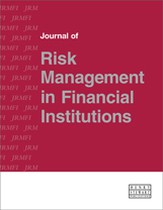Enhancing banks’ strategic decision-making: Building on behavioural strategy — Application to Pillar 2 regulation
Abstract
Market and regulatory pressure on bank boards and the current unpredictable environment have put more emphasis on enhancing strategic decision-making processes by systematically integrating risk analysis. This strategic risk management issue is at the heart of the Pillar 2 regulation. In line with its stated objectives, through one comprehensive Pillar 2 package, the board formally approves the bank’s strategy and financial projections, namely the impact of all strategic management actions, over a relevant time horizon and under business-as-usual and stress situations. This paper presents a practical approach to expand the value of costly Pillar 2 achievements by refining their mandatory approval process. The approach builds on insights from behavioural strategy, an evolving research discipline concerned with the impact of cognitive biases and social behaviour on decision-making. Behavioural strategy provides a better understanding of the biases to which the approval process of the bank’s strategy and business model embedded in the Pillar 2 package is particularly prone. Sixteen biases common to allocation processes and forward-looking planning are defined. To counteract these biases, limited safeguard questions are articulated and a proposal is made to embed these questions into a formal policy governing the approval process of the Pillar 2 assessments. An additional suggested summary of the key assumptions and outcomes of these assessments - covering (a) integrated performance and risk maps and (b) forward-looking stress tests identifying key vulnerabilities- provides the board with an integrated perspective on the riskiness of the business strategy and management decisions.
The full article is available to subscribers to the journal.
Author's Biography
Naji Freiha is a seasoned risk professional and a researcher with over 20 years of first-hand experience in regulatory, strategic and governance projects. He is a regular speaker at conferences and is also a lecturer. As a Managing Director and member of the Risk Executive Committee, he oversaw the integration of risk management and capital adequacy at Dexia for the past six years. He is currently pursuing a doctorate at Dauphine University. Naji is an actuary and holds a quantitative masters in ‘Probability and Finance’. He has an Executive MBA from INSEAD.
Citation
Freiha, Naji (2020, March 1). Enhancing banks’ strategic decision-making: Building on behavioural strategy — Application to Pillar 2 regulation. In the Journal of Risk Management in Financial Institutions, Volume 13, Issue 2. https://doi.org/10.69554/GDGB1845.Publications LLP
